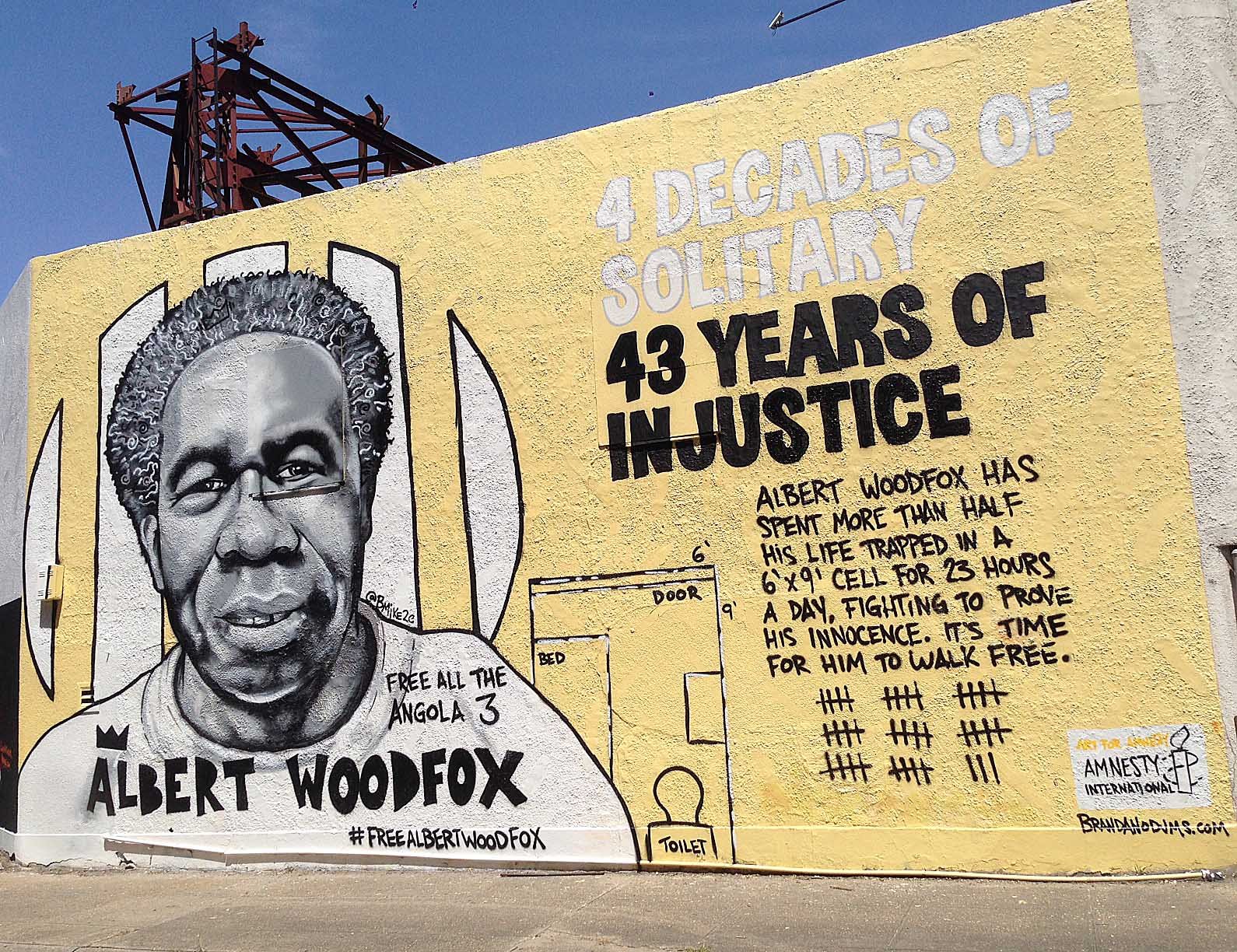On Feb 19, Albert Woodfox, the last remaining incarcerated member of the Angola 3, was released after nearly 44 years of solitary confinement.
Woodfox, now 69, is the longest held prisoner in solitary confinement in U.S. history—held in an 8×6 cell for 23 hours a day for 42 years.
The other two members of the Angola 3, Robert King and Herman Wallace, were released in 2001 and 2013 respectively. Wallace, also erroneously convicted over the murder of a guard during a prison rebellion, died three days after his release pending a new trial. King Wilkerson was released after pleading to another charge.
For standing up to the racist prison system and opposing the torturous conditions of solitary confinement, the three became known around the world as the Angola 3.
Woodfox sent a message to his supporters saying:
“I want to thank my brother Michael for sticking with me all these years, and Robert King, who wrongly spent nearly 30 years in solitary. I could not have survived without their courageous support, along with the support of my dear friend Herman Wallace, who passed away in 2013. I also wish to thank the many members of the International Coalition to Free the Angola 3, Amnesty International, and the Roddick Foundation, all of whom supported me through this long struggle. Lastly, I thank William Sothern, Rob McDuff and my lawyers at Squire Patton Boggs and Sanford Heisler Kimpel for never giving up. Although I was looking forward to proving my innocence at a new trial, concerns about my health and my age have caused me to resolve this case now and obtain my release with this no-contest plea to lesser charges. I hope the events of today will bring closure to many.”
The struggle of the Angola 3 has highlighted the torture of solitary confinement used against prisoners in the US. They exemplified the fight against the racist prison industrial complex and mass incarceration that has grown exponentially over the decades they have been locked up in solitary confinement. The conditions and history of Angola Prison could provide no better example as it was built on the grounds of a former slave plantation.
The crime of solitary confinement in the U.S.
The Angola 3 have endured unimaginable torture being confined to a cell for most of their lives without any human contact. As a result, Albert Woodfox developed chronic claustrophobia.
“I feel like I am being smothered, it is very difficult to breathe, and I sweat profusely. It seems like the cell walls close in and are just inches from my face. I try to cope by pacing, or by closing my eyes and rocking myself,” he described in a 2008 document of the anguish of being locked in such a small space day after day to silence him as a member of the Black Panther Party and leader among the inmates at Angola.
The three members of the Angola 3 were sent to prison for armed robbery in 1971. Woodfox escaped from a courtroom and joined the Black Panther Party. Later while incarcerated in Angola State Penitentiary, the three worked to improve conditions for inmates. They organized petitions and hunger strikes to condemn segregation in the prison along with other demands to end violence and systemic rape.
The plight of the Angola 3 became known when former Black Panther, Malik Rahim, of New Orleans discovered the three men were still in prison. The case of the Angola 3 has garnered support from all corners of the globe pointing out the racism and horrendous conditions that prisoners in the U.S. endure, especially those in solitary confinement.







